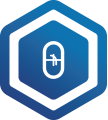
Facts on Drug Rehab Treatment
Drug addiction, in most cases, goes untreated. According to the Substance Abuse and Mental Health Services Administration (SAMHSA) National Survey on Drug and Health, 9.4 percent of the US population aged12 or older had to be treated for drug or alcohol abuse problem in 2007. Of those people surveyed, 2.4 million individuals (10.4 percent) needed treatment or received treatment at a specialty rehabilitation (rehab) center by addiction professionals. Therefore, 20.8 million people (8.4 percent of the US population 12 or older) needed to be treated for a drug or alcohol abuse problem and probably didn’t receive it. This survey is available online at www.samhsa.gov and from NIDA at 877-643-2644.
Addiction – A Treatable Disease
Addiction is a treatable disease that affects the body and brain in many ways. All treatments aren’t for every person, so you must be assessed by addiction professionals on a continuing basis to make sure the treatment is working for you. However, treatment might need to be changed, depending on how you are responding. You may require therapy that is both medical and psychological, depending how you are doing. For most people that are addicted, they just can’t stop using because they want to. They will not feel good until the drugs are out of the system and the brain and body quits craving the substance.
Because of these drug cravings, some treatments professionals use legal medications to help with the process for the individual who is addicted to make them better without feeling sick. The drug detoxification (detox) treatment process does work for individuals who seek out treatment and stick to the plan can change. However, this process usually is long and hard. Relapse is inevitable in the beginning, but the main factor of success is to get right back on track with your treatment when relapse occurs Re-teaching oneself to do something different is hard when you have engaged in negative behavior for such a long time. You many slip up many times, but you need to stay the road and continue treatment for many years before you are better, especially when the life you led for a long time was centered on finding drugs and putting them into the body.
Costs of Drug Abuse
Substance abuse costs the U.S. $510 billion dollars each year, and these costs are related to specialty alcohol and drug services, medical consequences, lost productivity due to illness and injury, and legal costs. Research shows that for every dollar spent on prevention and early treatment programs, two to ten dollars could be saved in health costs, criminal and juvenile justice costs, educational costs, and lost productivity.
Treatment has been shown scientifically to help addicted patients of drugs abuse to avoiding relapse and recover their lives. What people learn during rehab treatment is to stay clear of drugs or alcohol by building positive healthy habits that help a person cope so they don’t relapse. Recovery is a long road, but it is possible.
Resources:
U.S. Department of Health and Human Services National Institute on Drug Abuse (NIDA). Drug Facts: Treatment Approaches for Drug Addiction. Retrieved from: www.dragabuse.com
Substance Abuse and Mental Health Services Administration (SAMHSA) (2014). www.samsha.gov

